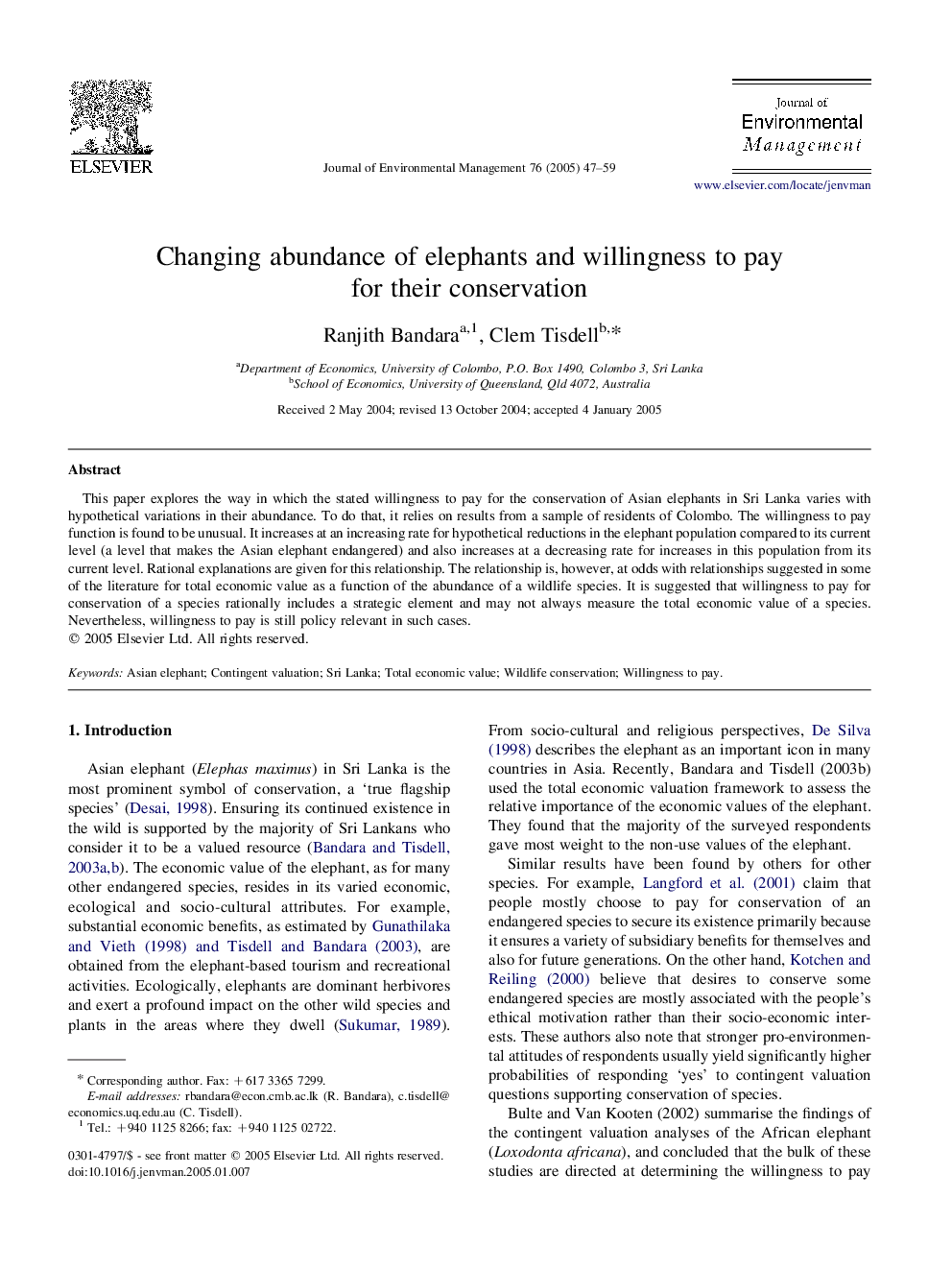| Article ID | Journal | Published Year | Pages | File Type |
|---|---|---|---|---|
| 10505839 | Journal of Environmental Management | 2005 | 13 Pages |
Abstract
This paper explores the way in which the stated willingness to pay for the conservation of Asian elephants in Sri Lanka varies with hypothetical variations in their abundance. To do that, it relies on results from a sample of residents of Colombo. The willingness to pay function is found to be unusual. It increases at an increasing rate for hypothetical reductions in the elephant population compared to its current level (a level that makes the Asian elephant endangered) and also increases at a decreasing rate for increases in this population from its current level. Rational explanations are given for this relationship. The relationship is, however, at odds with relationships suggested in some of the literature for total economic value as a function of the abundance of a wildlife species. It is suggested that willingness to pay for conservation of a species rationally includes a strategic element and may not always measure the total economic value of a species. Nevertheless, willingness to pay is still policy relevant in such cases.
Related Topics
Physical Sciences and Engineering
Energy
Renewable Energy, Sustainability and the Environment
Authors
Ranjith Bandara, Clem Tisdell,
